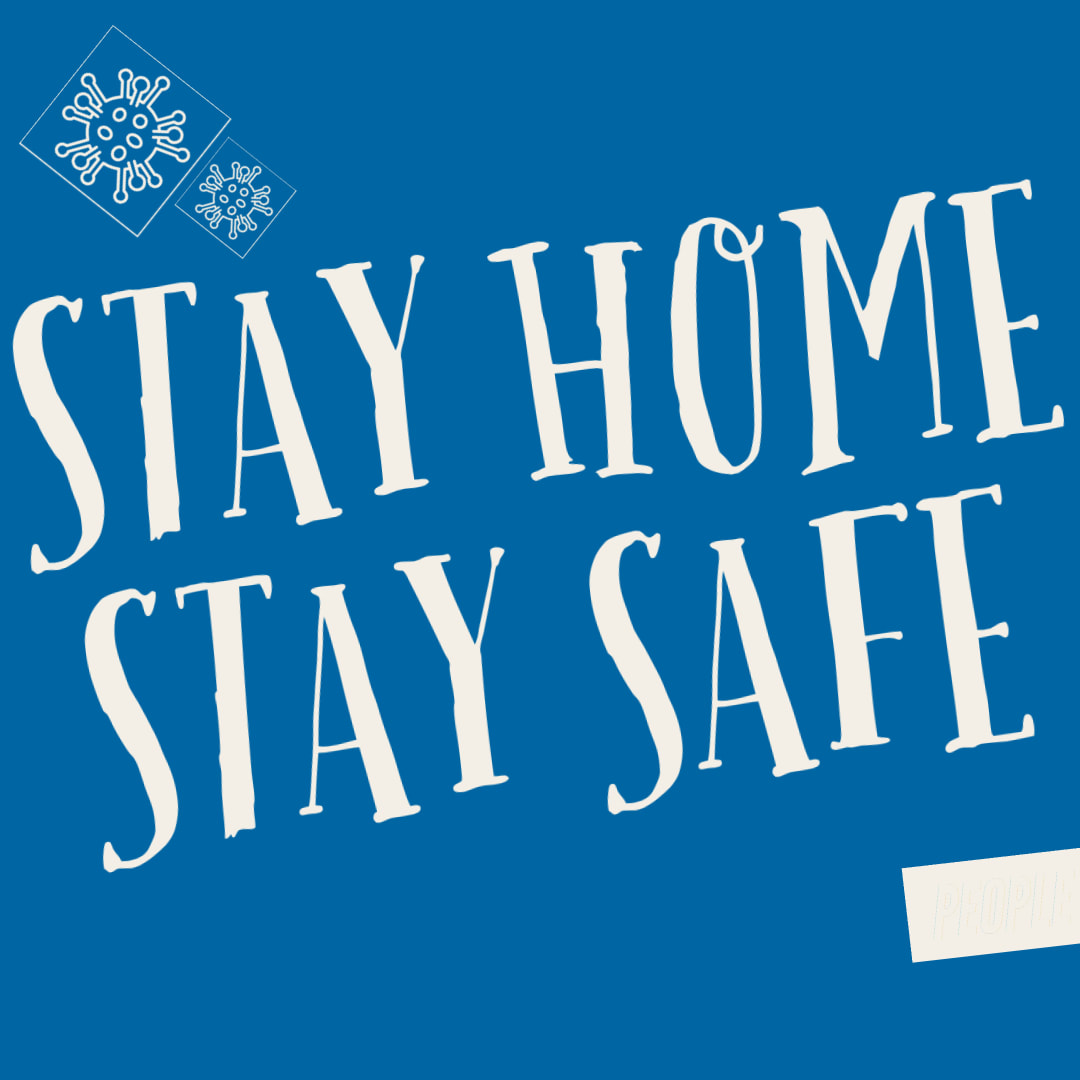|
About six weeks ago, conversations began in educational institutions about how to respond to the new coronavirus pandemic. Before that, we had heard about how bad it was in China and then Italy, but probably didn’t seriously think it would hit the United States so harshly… because, after all, we’re the United States.
Many of us were nearing the end of our Spring Break when it began to become a little more real for us. This could hit the US, and if it does, how should we respond? What is the best decision to make for the safety of our students? How do we protect our students and staff members? By the end of Spring Break, it was determined that it was not best to return to school… at least for a couple of weeks. School districts all over began feverishly working to figure out the best way to teach students from their homes. As with any crisis, you completely jump into the situation. I am certain that most educators lost countless hours of sleep. Our minds were full of: What conditions are my students living in 24 hours 7 days a week now? Do they have enough food to eat? That student who I had suspicions of abuse in the home… how is he surviving in that environment now? That student who has six siblings in a single-parent home, where the mom is a custodian at the hospital… who is taking care of the kids? Is there enough technology in the home to effectively teach them? Is a packet of worksheets really the right thing to give when I know most of our students are working below grade level? Countless, countless, countless questions… most with no definite answer, but still, we tried our hardest to meet the needs of our students. We offered food distribution sites to make sure children were fed. We found online programs students could access to continue learning. We made hundreds of packets of work for students to continue learning. We set up distribution times to give parents what they needed to continue learning for their children. We communicated social services that could help our families in need. We did what we had to do to make sure our students and families were taken care of… because this is what we do. When we are in crisis, we answer the call and figure things out. We don’t mind losing sleep because we know at some point, it will calm down and go back to normal. Our harsh reality now… it’s six weeks later and we are still here. Now what? The first step is to realize the temporary has become the permanent. We must realize that this is our new normal. We must accept the fact that this may not end as quickly as we first thought. We must accept the fact that we must continue to figure out what is best for our students. The next step is to find out how to adjust to this new normal. We are not built to live in “trauma mode”; therefore, we must learn how to lead in a crisis situation as the norm. A few tips are listed below to help you along the way. Normal is NOT normal! Stop allowing your mind to tell you “this is not what we do”. Living in the old normal is in conflict to the new normal and it only hinders your ability to problem-solve in this new normal. Delete your mind of what used to be and move forward with what will be. Embrace the change! Everyone is dealing with life in a different way. As a leader, you must embrace the change quicker so that you can lead effectively. Ineffective and weak leadership in this time is fighting against the change, refusing to accept that more will be required of you in this time, and that you will need to require more of others during this time as well. Lead and follow! As you lead your group, remember to follow your leader as you expect your team to follow you. Don’t be the naysayer in the group. At this time, teamwork is essential. Take care of you! Leadership is most challenging in the midst of crisis. Leadership is a lonely place on a good day, it’s extremely isolating in crisis. This is when mental toughness comes in. You must find what works for you to take care of yourself. Take a walk around the neighborhood to begin and/or end your day. Pray to God, a much higher power, who can give you strength and comfort. Re-discover your hobbies…reading, working puzzles, scrapbooking, journaling. Final thoughts… THIS IS NOT A DRILL. We are living in a new normal. How will you respond?
10 Comments
Coronavirus pandemic pandemonium is everywhere. The news is all about the pandemic. Social media is all about the pandemic. Educational leaders are working hard to overcome what looks like an impossible task of teaching students while at home. Teachers are trying to juggle teaching from home as a profession and also teaching their own kids as parents. Parents are working overtime juggling the new titles of homeschool teacher (to their kids) and working remotely from home. Some people are also struggling financially as they have lost their jobs.
I think it’s safe to say that this pandemic is affecting just about everyone, just in a different way. Regardless of how you are being affected by this, it is vitally important to protect your peace. The cares and worries of this world can most certainly weigh you down. In times like these, our minds can be our worse enemy. Our mind can go places that are not in our current reality. How do we protect our peace?
Finally, Jesus left a very special gift for us. In John 14:27, Jesus said, “Peace I leave with you; my peace I give you. I do not give to you as the world gives. Do not let your hearts be troubled and do not be afraid.” If you know Jesus, accept the peace He left for us. If you do not know Jesus, this is the perfect time to get to know Him. Simply confess your sins and ask Him to come into your heart to live… and then accept the peace He left for us. Be blessed this week! After two weeks of being completely consumed with the task of figuring out how to teach students while not at school, I have learned so much about myself, my faith, and about my leadership. Who you truly are is revealed in challenging times. I would definitely say these last two weeks have been challenging times.
Listed below are reflections of the past two weeks. I do not share the survival tips because I have this thing figured out (because I certainly do not), but because there are a few things I have learned in the process. This is so new, we all are learning one day at a time. Routine, Routine, Routine! It is very important during this time to keep a routine. Your routine may not look the way it did when you actually went to work, but find what works for you remotely and stick to it. I wake up at the same time each day, workout, read my bible and pray, take a shower… then I’m ready for my workday. I highly encourage you to make somewhat of a schedule for your day. Also, for my teams, I have tried to keep our regular meeting days and times. One team, we usually meet on Mondays at 2:00… we have continued that, but virtually. Of course, if things come up, we will have an emergency meeting, but outside of that, we all know when we’re meeting. Ignore the Naysayers! Launching something completely different in the age of social media can be brutal. There are naysayers on every side. I saw a guy who is loved by teachers on Twitter bash remote learning. I saw parents bashing their school and/or district for things not being done the way they think it should be done. Some leaders have even responded in a less-than-perfect way with their teams. How do you ignore the naysayers? Put your plan in place. Ignore the loud mouths on social media saying you shouldn’t be doing what you are required to do. Give your boss grace when they lash out or don’t recognize the work you’re putting in for the good of the students. Do your best to be there for parents to help them understand the new learning environment. Also, remember for parents, they are scared, anxious, and stressed as well. They now have the responsibility of working from home AND teaching or at minimum, overseeing the learning of their children. At the end of the day, remember you are doing the best you possibly can. Everyone won’t be happy. Put on your POSITIVE Pants! This time more than any other, we must stay positive. We must believe we can meet the state expectations that we provide remote learning while also doing what is best for our students. For leaders, this is the time to be positive with your teams. Tell them every chance you get that you appreciate their efforts. You see the long hours they are putting in to put your plan into place. You see their willingness to do whatever is necessary to continue instruction. Negativity during this time will most definitely work against you. The team is already tired and weary… to hear what is not going right will only leave them with feelings of discouragement and feed into the thoughts of just giving up and not even trying. Summary of this tip… we must believe that we can overcome what looks like an impossible feat. And this leads into the next one…. Remember your WHY! We must remember our WHY! No, we did not sign up to work for an online school, but that’s where we have found ourselves. What we did sign up for… is to do our very best to provide a high level of education for students. Regardless of the environment, we still must do our very best to do just that. Self-Care is Key! Even for the strongest, you can find yourself in some weak moments. We MUST take care of ourselves. I remember there was one day when I felt myself getting overwhelmed. I stopped working, made myself something to eat for lunch, and sat outside to eat. The fresh air was just what I needed for a brain break. Teamwork makes the dream work! At the beginning of this year, our district leadership team began studying Brene Brown’s book “Daring Leadership”. One of the first things we talked about were things leaders don’t say enough. The one that resonated with me was “I need help”. More than ever, now, we must understand the power of teamwork. No one person can carry out this thing. Leaders, don’t be afraid to say that you need help. You have a team for a reason. Don’t be afraid to say you need help and solicit the help of your team members. God! For me, the biggest reason I survived the last two weeks is one person…. GOD! I have never been so challenged in my professional career. I have never been in a situation, professionally, where I have had to be so calm. I am naturally not a calm person. I am high-strung and strive for excellence in all that I do; however, in this situation, I couldn’t be high-strung. I prayed each morning and asked for what I have asked for every workday this school year… wisdom and creativity. I truly believe God has heard this prayer for the last 8 months. He has given me wisdom in carrying out a plan and certainly gave me creativity when working with the team to develop the plan. If you don’t know Him. If you don’t have a personal relationship with Him, there is no better time than now. Fellow educators, you are awesome. You are creative. You are capable. You are mentally strong. WE CAN DO THIS! March signifies so many things, but to students, it means SPRING BREAK! Many students look forward to the week off from school. No waking up early, no sitting in classrooms all day, no homework, and no exams. Well, guess what? Educational leaders should be just as excited!
This week is a great chance to clear your mind. The hustle and bustle of leadership can be tough on the mind, body, and soul… and there is only so much stress one can handle. Some leaders have a difficult time taking a break. For those leaders, I challenge you to at least take a half week to rest and relax. No emails. No planning. No reports. Instead, try a few of the activities below.
How do you plan to spend your Spring Break? |
AuthorPaula Patterson is a Superintendent of Schools who shares practical points on leadership. Archives
May 2020
Categories |





 RSS Feed
RSS Feed